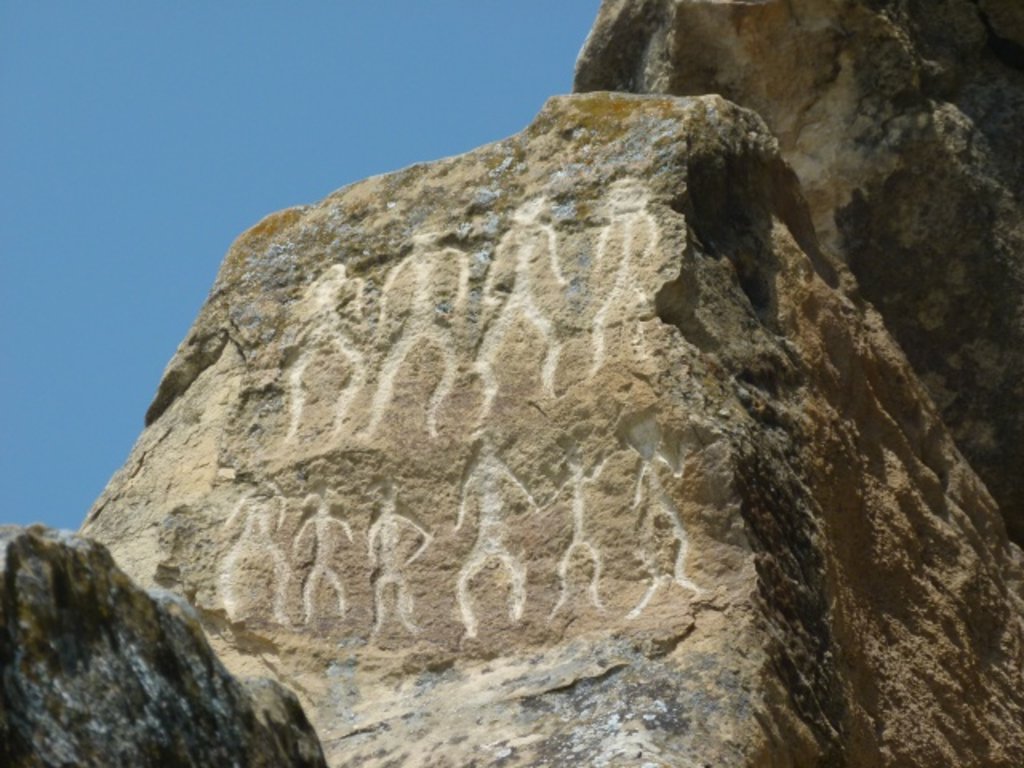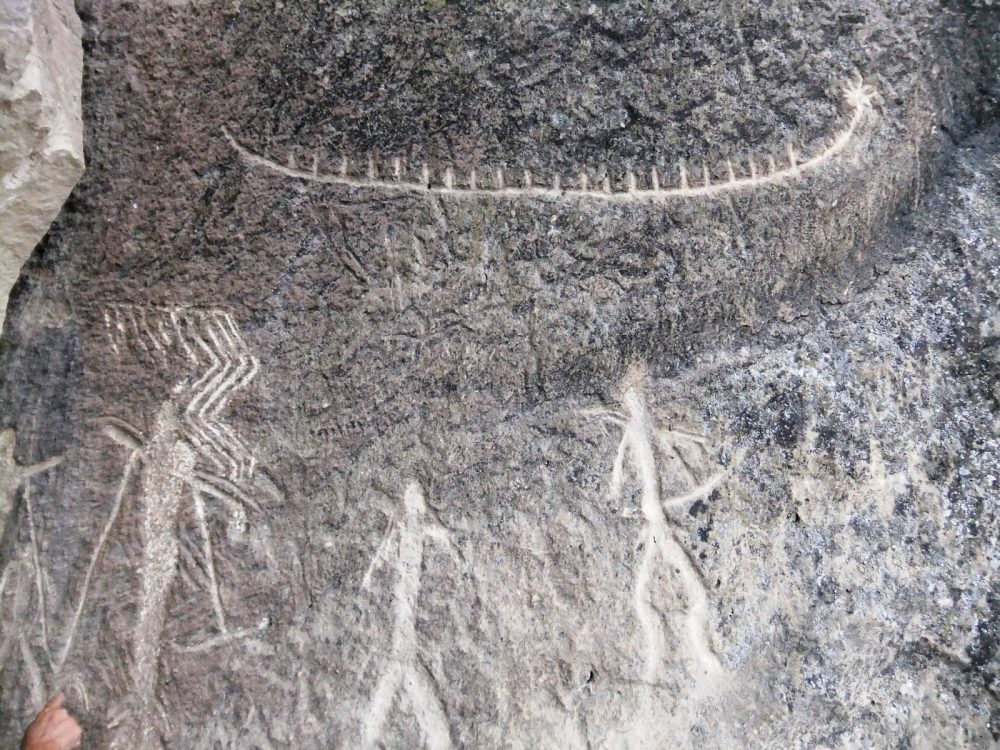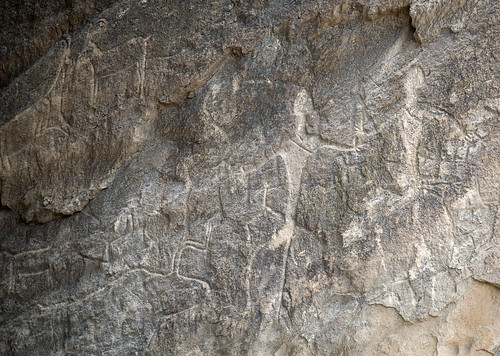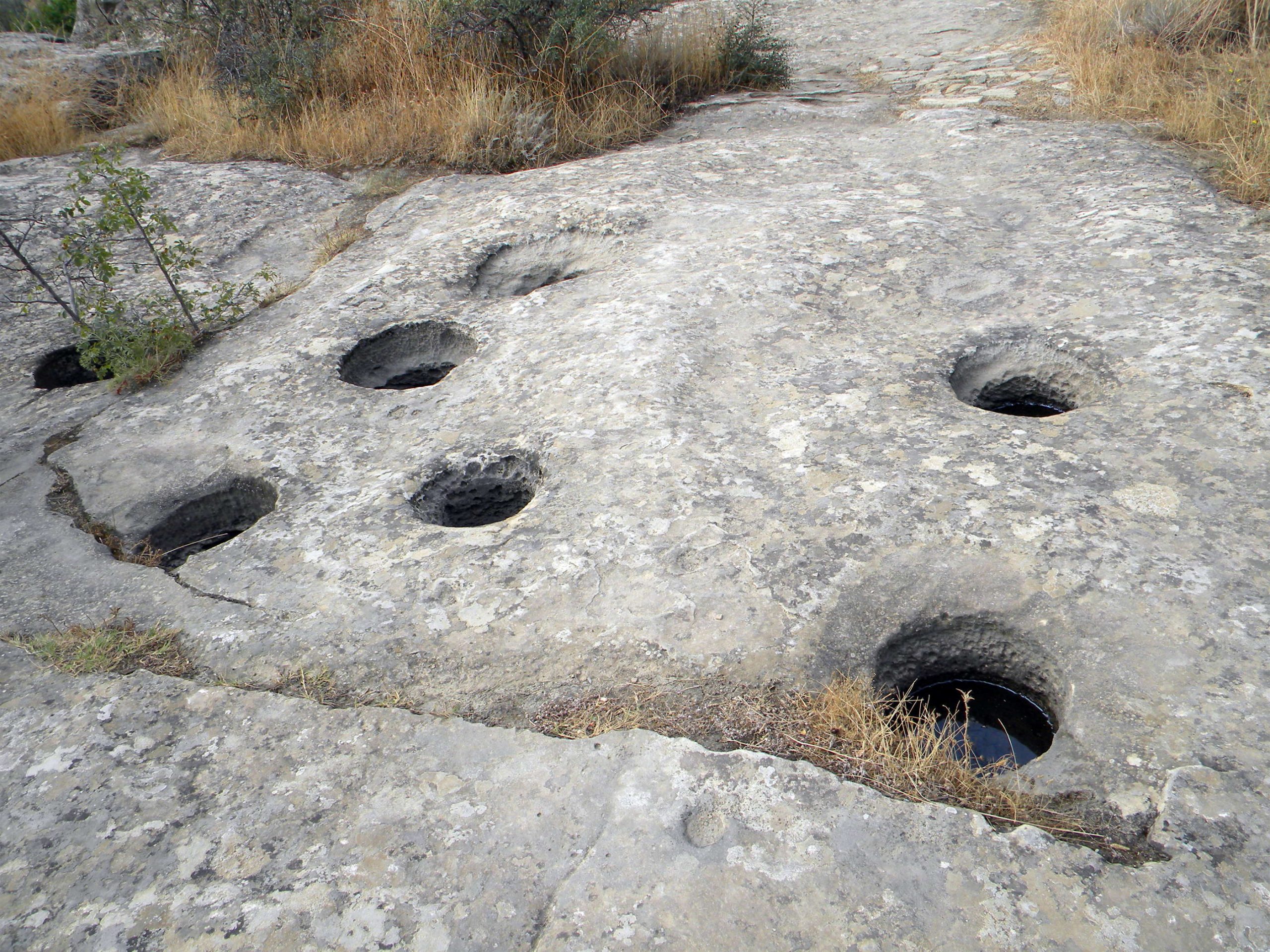gobustan rock art

The Gobustan rock art can be admired at the Gobustan National Historic-Artistic-Natural Reserve, which is located about 60km south of Baku, the capital of Azerbaijan. Founded in 1966, the discovery of its engravings and therefore of the archaeological heritage dates back to the 1930s.
It overlooks the Caspian Sea and constitutes the last rocky spur of the Great Caucasus in its south-eastern portion, placing itself precisely as a meeting point between the Caucasus and the Caspian Sea.
From 1939 Djafarsade began systematic cataloging of the rock art of Gobustan, published in the precious work of 1973 “Gobustan. Qayaüstü rəsmləri ”(Djafarsade, 1973). Since the 1960s, research work in the area was systematized by Rustamov and Muradova with excavations and cataloging of rock art.
The territory of the Gobustan National Reserve includes three promontories, from south to north: Kiçik Daş (“Small Stone”), Böyük Daş (literally “Big Stone”) and Jinghirdag Yazili Tepe.
The terraced profiles of Kiçik Daş and Böyük Daş, the cover of the rocks consisting of a thick layer of biocalcarenite which includes numerous fossils of Didacna sp., suggest a shaping action on the landscape by the Caspian Sea which today is only 4km away approximately.
The large number of female silhouettes gave the name to the cave defined as the mother’s cave. Also worthy of interest is an anthropomorphic figure with headdresses.
The eastern wall, being very exposed, is very damaged and there are few recognizable engravings. Most of them, like the anthropomorphic one and a figure of a deer, seem to be of protohistoric age, while more enigmatic is a geometric figure that stands beside a great warrior, formed by a series of three sinuous lines that are symmetrical with respect to a central axis. The composition, however, is given by some overlaps that are still unpublished and which would require further study.

The southern wall stands out for the figure of a solar boat, whose prow or stern takes advantage of a natural accident of the rock. This figure is superimposed on two anthropomorphic ones and a zoomorphic one.
The cave of the bulls, so-called because on the eastern side of the cave there are two large figures of bovids, has a rather reduced schedule if compared to that of Ana Zaga, but shows some of the most characteristic petroglyphs rock of Gobustan: a scene of two goats facing each other snout to snout and two anthropomorphic generically interpreted as the primordial couple.

The two, of considerable size, are depicted next to each other with legs and arms open. Their hands almost touch and they highlighted the fingers. The legs of the two are depicted according to the style used for warriors and/or some female figures, ie with an “S” profile with thick thighs.
Between the legs of the innermost subject, there is a line that at the lower end has four pairs of oblique segments that converge towards the vertical line. The other anthropomorphic instead has two horizontal sections at the waist. The bodies of the two are decorated internally as if to represent necklaces or collars of clothing.
On the way back, on the upper terrace, there are some very large systems of cupels that pose obvious questions about their function.

